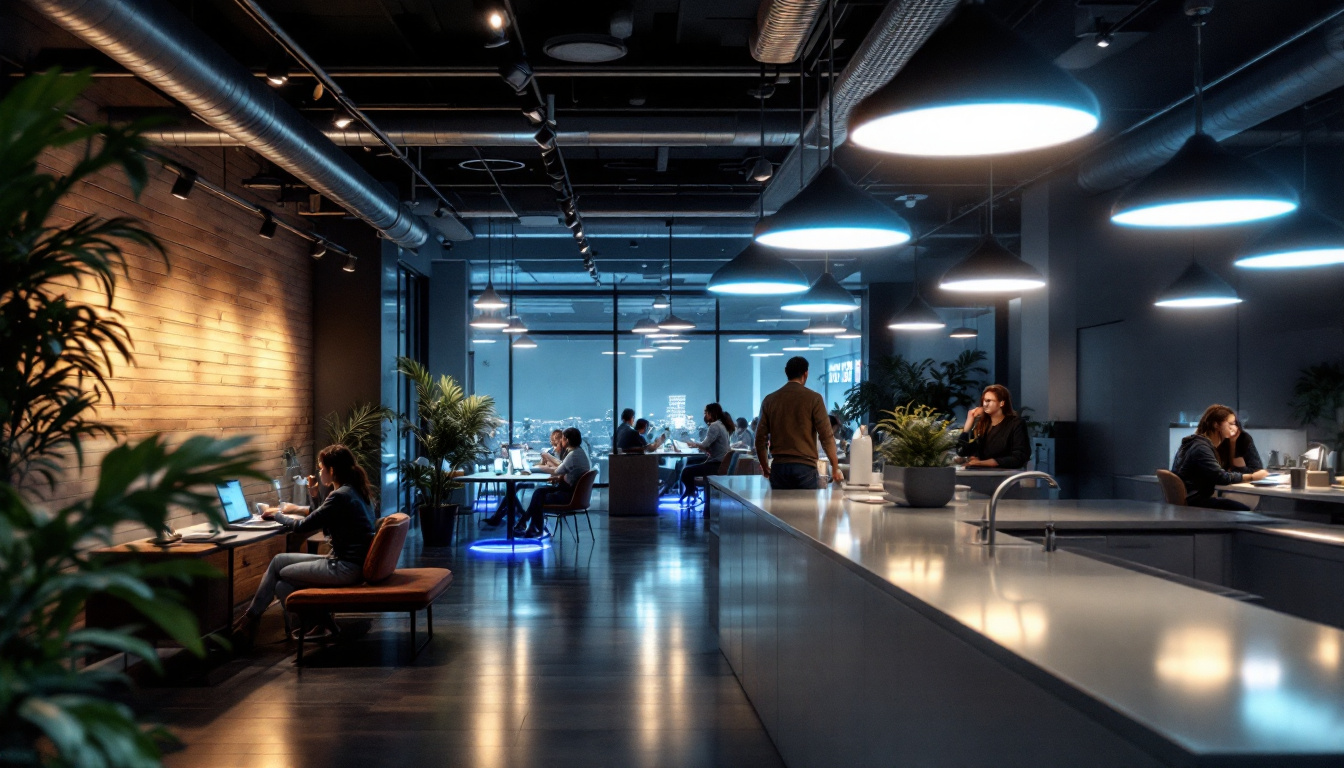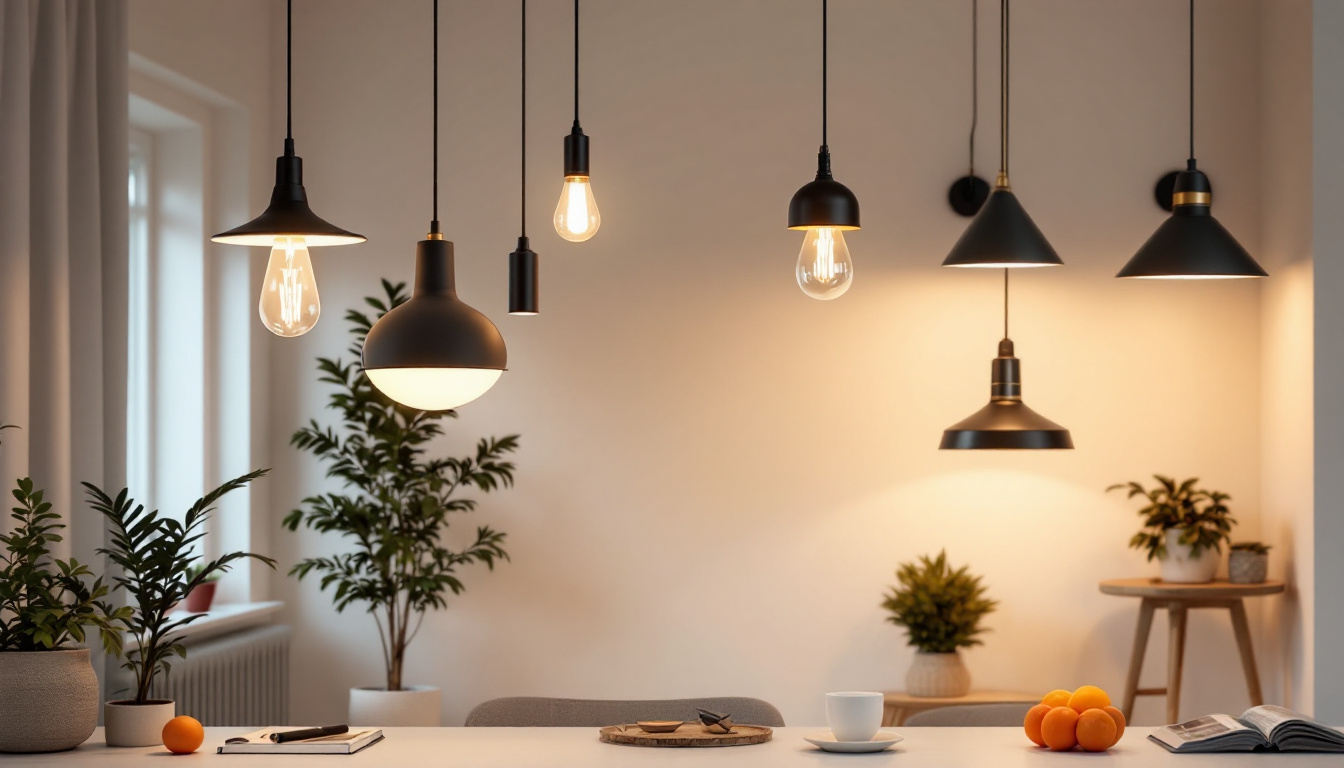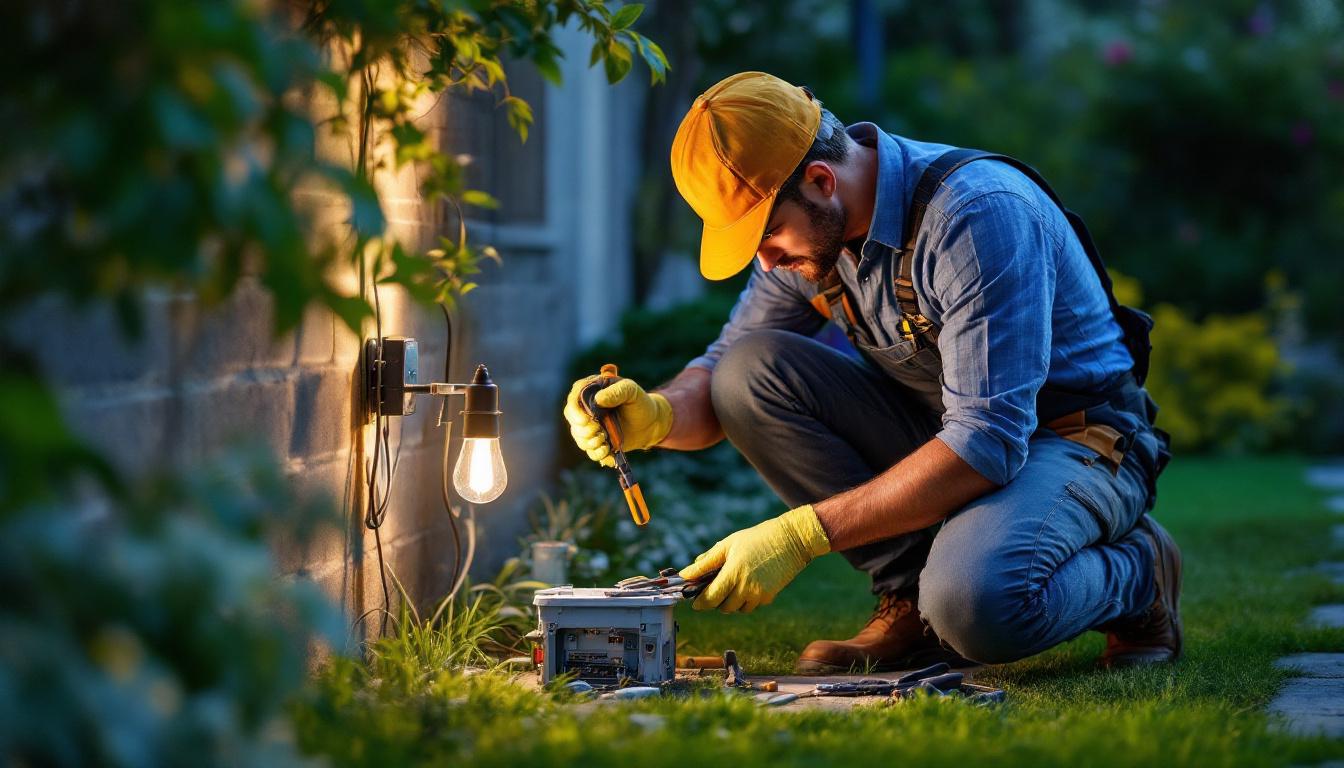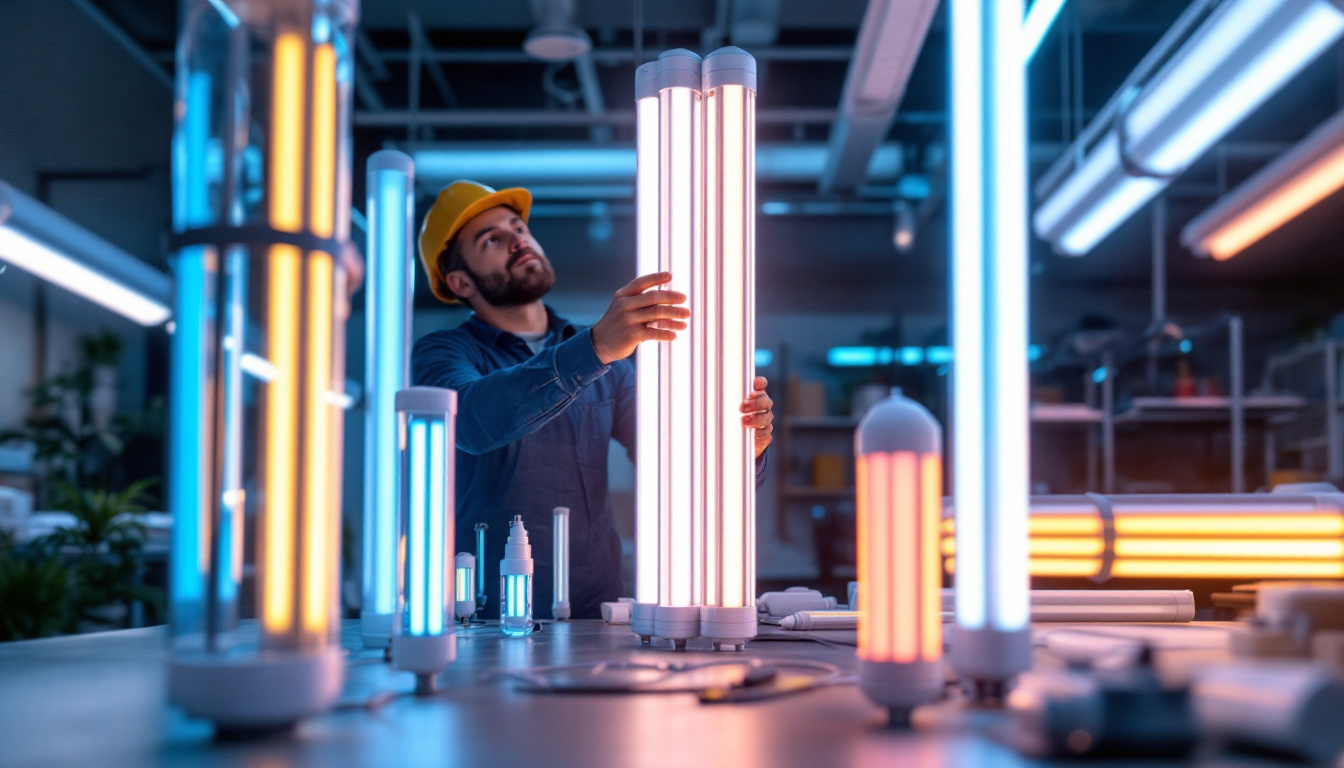
In the rapidly evolving world of lighting design and installation, the importance of future-proofing ceiling fixtures cannot be overstated. As technology advances and consumer preferences shift, lighting contractors must stay ahead of the curve. This article explores strategies to ensure that ceiling lighting projects remain relevant and functional for years to come.
Future-proofing is the practice of anticipating future developments and making decisions that will minimize the need for significant changes down the line. In the realm of lighting, this means selecting fixtures and technologies that can adapt to new trends, regulations, and user needs.
To future-proof lighting projects, it’s essential to stay informed about current and emerging market trends. For example, the shift towards energy-efficient LED lighting has transformed the industry. Contractors must not only be aware of these trends but also understand how they impact design choices and installation practices.
Moreover, consumer preferences are evolving. Many clients now prioritize smart home integration, sustainability, and aesthetic versatility. By anticipating these demands, lighting contractors can make informed decisions that align with future expectations. The rise of smart lighting systems, which allow users to control their lighting via mobile apps or voice-activated assistants, is a prime example of how technology is reshaping consumer desires. As more homeowners seek to create personalized environments that enhance comfort and efficiency, the ability to offer adaptable lighting solutions becomes a significant competitive advantage.
Regulations surrounding energy efficiency and safety standards are continually changing. Future-proofing ceiling fixtures involves staying compliant with current codes while being prepared for future amendments. This may include selecting fixtures that meet or exceed energy efficiency ratings and are adaptable to new technologies.
Contractors should also consider the environmental impact of their choices. Opting for sustainable materials and energy-efficient technologies not only meets regulatory requirements but also appeals to environmentally conscious clients. Furthermore, as sustainability becomes a central theme in building design, contractors who incorporate eco-friendly practices into their projects will likely find themselves favored in a competitive market. This could mean using fixtures made from recycled materials or implementing systems that allow for easy upgrades as technology evolves, ensuring that installations remain relevant and efficient for years to come. By fostering a proactive approach to both market trends and regulatory changes, lighting professionals can position themselves as leaders in a rapidly changing industry.
The selection of ceiling fixtures plays a crucial role in future-proofing lighting projects. The right fixtures should be versatile, energy-efficient, and capable of integrating with smart technologies.
When choosing ceiling fixtures, versatility in design is key. Fixtures that can easily adapt to various styles and settings are more likely to remain relevant as design trends evolve. For instance, modular lighting systems allow for customization, enabling clients to adjust their lighting as needed without requiring a complete overhaul.
Additionally, fixtures that offer adjustable brightness and color temperature can cater to diverse user preferences and activities, making them a wise investment for the future. This adaptability not only enhances the aesthetic appeal of a space but also ensures that lighting can be tailored for different moods and tasks, from bright, focused light for work areas to softer, warmer tones for relaxation.
Furthermore, the use of interchangeable shades and decorative elements can elevate the design of ceiling fixtures, allowing homeowners and businesses to refresh their look without significant expense. This flexibility means that as trends shift or personal tastes change, the lighting can evolve seamlessly, maintaining its relevance and functionality over time.
energy-efficient fixtures not only reduce operational costs for clients but also contribute to a sustainable future. LED technology, for example, has become a staple in modern lighting due to its longevity and low energy consumption. By recommending LED fixtures, contractors can help clients save money while minimizing their environmental footprint.
Incorporating sustainable materials into fixture design is another way to future-proof projects. Fixtures made from recycled or eco-friendly materials resonate with the growing consumer demand for sustainability, making them a smart choice for contractors. Additionally, energy-efficient fixtures often come with longer warranties, which can provide peace of mind for clients and reduce the frequency of replacements.
Moreover, the integration of smart sensors that adjust lighting based on occupancy or natural light levels can further enhance energy savings. These innovations not only optimize energy use but also contribute to a more comfortable and inviting atmosphere, aligning with the increasing emphasis on wellness in design.
The rise of smart home technology is reshaping the way lighting is designed and installed. Ceiling fixtures that can integrate with smart systems offer clients enhanced control and convenience. Features such as remote access, voice activation, and programmable settings are becoming increasingly popular.
Contractors should consider recommending fixtures that are compatible with various smart home platforms. This not only future-proofs the installation but also enhances the overall user experience, making the project more appealing to tech-savvy clients. The ability to control lighting through mobile apps or voice commands adds a layer of convenience that modern homeowners expect.
Additionally, smart fixtures can be programmed to create dynamic lighting scenes for different occasions, from movie nights to dinner parties, enhancing the ambiance of any space. The integration of smart technology also opens up possibilities for energy monitoring, allowing clients to track their usage and make informed decisions about their lighting habits, ultimately leading to greater energy efficiency and cost savings over time.
Future-proofing goes beyond the selection of fixtures; it also involves employing installation techniques that promote longevity and adaptability. Proper installation ensures that fixtures perform optimally and can be easily updated or replaced when necessary.
Modular lighting systems are an excellent solution for future-proofing installations. These systems allow for easy reconfiguration and replacement of individual components without requiring a complete overhaul. By utilizing modular systems, contractors can provide clients with flexibility, enabling them to adapt their lighting as their needs change.
Additionally, modular systems can simplify maintenance and repairs. If a component fails, it can be replaced without disrupting the entire lighting setup, saving time and resources. This modular approach not only enhances the lifespan of lighting systems but also empowers clients to stay current with design trends and technological advancements, ensuring their spaces remain both functional and aesthetically pleasing.
Incorporating flexible wiring solutions during installation can significantly enhance the adaptability of ceiling fixtures. By using wiring systems that allow for easy adjustments, contractors can ensure that fixtures can be repositioned or replaced with minimal effort in the future.
Furthermore, employing wiring solutions that accommodate smart technology integration can future-proof installations. This foresight allows for seamless upgrades as technology evolves, ensuring that clients remain satisfied with their lighting systems for years to come. As smart home technology becomes increasingly prevalent, having the infrastructure in place to support such innovations can be a major selling point for properties, attracting tech-savvy clients who prioritize convenience and efficiency.
Safety and compliance should always be top priorities during installation. Adhering to local codes and regulations not only protects clients but also enhances the longevity of the fixtures. Proper installation techniques, including secure mounting and appropriate electrical connections, are essential for ensuring that ceiling fixtures operate safely and effectively.
Regular inspections and maintenance checks can also help identify potential issues before they become significant problems. By promoting a culture of safety and compliance, contractors can enhance the durability and reliability of their installations. Moreover, educating clients about the importance of maintaining their lighting systems can foster a proactive approach to upkeep, ultimately extending the life of the fixtures and ensuring they remain a valuable asset in any space.
Future-proofing ceiling fixtures is not solely the responsibility of the contractor; client education plays a vital role in ensuring long-term satisfaction. Effective communication about the benefits of future-proofing can empower clients to make informed decisions.
Clients may not always understand the importance of future-proofing their lighting projects. It is essential for contractors to clearly articulate the benefits, such as cost savings, adaptability to changing trends, and enhanced functionality. By highlighting these advantages, contractors can help clients appreciate the value of investing in versatile and sustainable lighting solutions.
Additionally, discussing the potential for future upgrades can help clients envision the long-term benefits of their choices. This proactive approach fosters trust and positions the contractor as a knowledgeable partner in the project.
Educating clients about the maintenance and care of their ceiling fixtures is another critical aspect of future-proofing. Providing clear instructions on how to clean, adjust, and troubleshoot fixtures can empower clients to take ownership of their lighting systems.
Offering ongoing support and maintenance services can further enhance client satisfaction. By being available for questions or concerns, contractors can build lasting relationships and ensure that clients feel confident in their lighting choices.
Future-proofing ceiling fixtures is an essential strategy for lighting contractors looking to stay competitive in a rapidly changing industry. By understanding market trends, selecting versatile and energy-efficient fixtures, employing smart installation techniques, and educating clients, contractors can create lighting solutions that stand the test of time.
As technology continues to evolve and consumer preferences shift, the importance of adaptability and sustainability will only grow. By prioritizing future-proofing in every lighting project, contractors can ensure that their work remains relevant and valuable for years to come.
Ready to elevate your lighting projects and stay ahead in the industry? LumenWholesale is your trusted partner for future-proofing your installations. With our extensive selection of spec-grade lighting products at unbeatable wholesale prices, you can ensure every project shines with quality and efficiency. Say goodbye to inflated markups and hello to hassle-free bulk buying with free shipping. Make the smart choice for your business and visit LumenWholesale for Wholesale Lighting at the Best Value, where quality, affordability, and convenience come together to light up your success.

Discover how commercial LED light bulbs can revolutionize your lighting projects with energy efficiency, longevity, and cost savings.

Discover how LED hanging light fixtures can transform your space with energy-efficient, stylish, and versatile lighting solutions.

Discover how lighting contractors can enhance their profitability with strategic use of outdoor light electrical boxes.

Discover the essential guide for lighting contractors in “Fluorescent Tube Lamp: The Ultimate Handbook.” Explore installation tips, energy efficiency insights, and maintenance strategies to enhance your lighting projects and stay ahead in the industry..